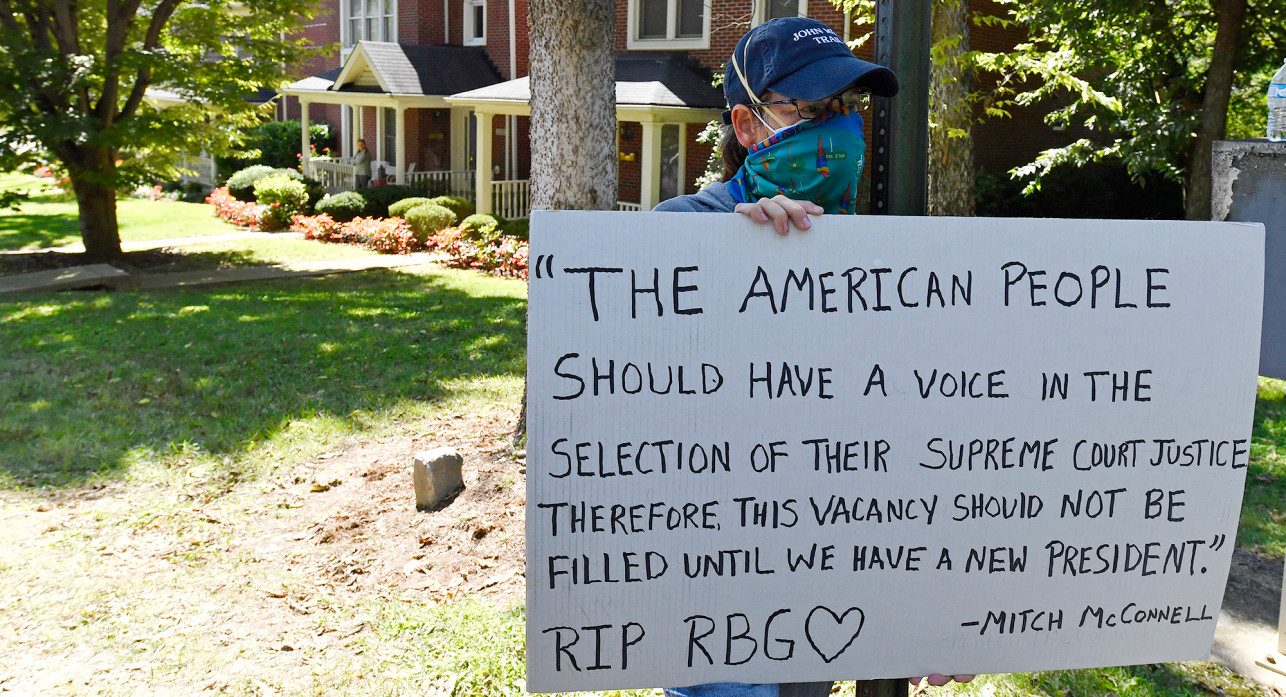Above Photo: Demonstrators supporting unions hold up signs outside the US Supreme Court on the day it heard arguments in the case of Friedrichs v. California Teachers Association, January 11, 2016. (Photo: Zach Gibson / The New York Times)
The US labor movement should celebrate narrowly escaping a US Supreme Court ruling that would have enforced “right to work” rules across the entire public sector and badly weakened unions financially. But come April, organized labor should end their victory lap and work to fill the political vacuum left by the American two-party system.
Yesterday, the Supreme Court announced a 4-4 tie in the case of Friedrichs v. California Teachers Association. Rebecca Friedrichs, a public school teacher, argued that workers should not have to pay union fees despite reaping the higher wages and benefits of collective bargaining. Lower courts ruled against Friedrichs, upholding the legal precedent set by Abood v. Detroit Board of Education (1977), in which the Supreme Court held that workers could not be required to become union members but should pay their “fair share,” a service fee in exchange for union representation. The tie vote (due largely to the death of Justice Antonin Scalia) means that the lower courts’ rulings stand.
With Friedrichs out of the way (at least for the time being), the US labor movement should work with other mass movements on a grassroots solution to the current political and economic crisis. The American Federation of Labor and Congress of Industrial Organizations (AFL-CIO) remains the largest labor federation in the world. Together with the Teamsters, Service Employees International Union (SEIU), United Food and Commercial Workers (UFCW) and the United Farm Workers (UFW) of the Change to Win coalition, no other national labor umbrella comes close. It is time for organized labor to put its still substantial resources to work by advancing a coherent vision for a more just society at a time when the major parties have effectively lost the consent of the people to rule.
In 2011, the Occupy Wall Street movement put class inequality back on the table when once “class” had been a dirty word. Organized labor has an opportunity now to translate the amorphous battle cry of the 99% into measurable gains for working people. We did this once. In 1948, the United Auto Workers struck for and won a twin solution to the problem of class inequality: the cost-of-living adjustment (COLA) and the annual improvement factor (AIF), which offered an additional increase equal to the increase in national GDP and became standard practice in postwar US employment relations.
We must rebuild a mass movement and strike again to peg wage increases to corporate profits and decrease the share of our society’s wealth that goes to the top 1%. The Fight for $15 is a good start, but we must build upon it. If we abdicate our social responsibility — if the American public do not see us out there fighting for everyone — then people will continue to question our right to represent American workers, and we can look forward to more challenges like Friedrichs to come. Worse still, the United States and the world will continue its disastrous backslide to the Gilded Age.
Now some might say that the US labor movement should just hitch their wagon to the Bernie Sanders campaign. But the movement can no longer live or die by the Democratic Party. That strategy has failed us for at least a generation now, maybe more. In the unlikely event that Sanders becomes the next president, we will need a mass movement that cannot only keep a Sanders administration accountable, but will also long outlive his presidency.
So let’s raise a glass and celebrate this rare victory for the working class, but let’s not take it too easy. After all, we have a world to win.
Source Article from https://www.popularresistance.org/after-friedrichs-victory-labor-has-a-lot-of-work-to-build-their-movement/
Related posts:
Views: 0
 RSS Feed
RSS Feed

















 April 1st, 2016
April 1st, 2016  Awake Goy
Awake Goy 




 Posted in
Posted in  Tags:
Tags: 
















